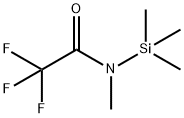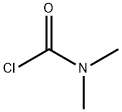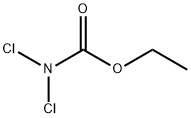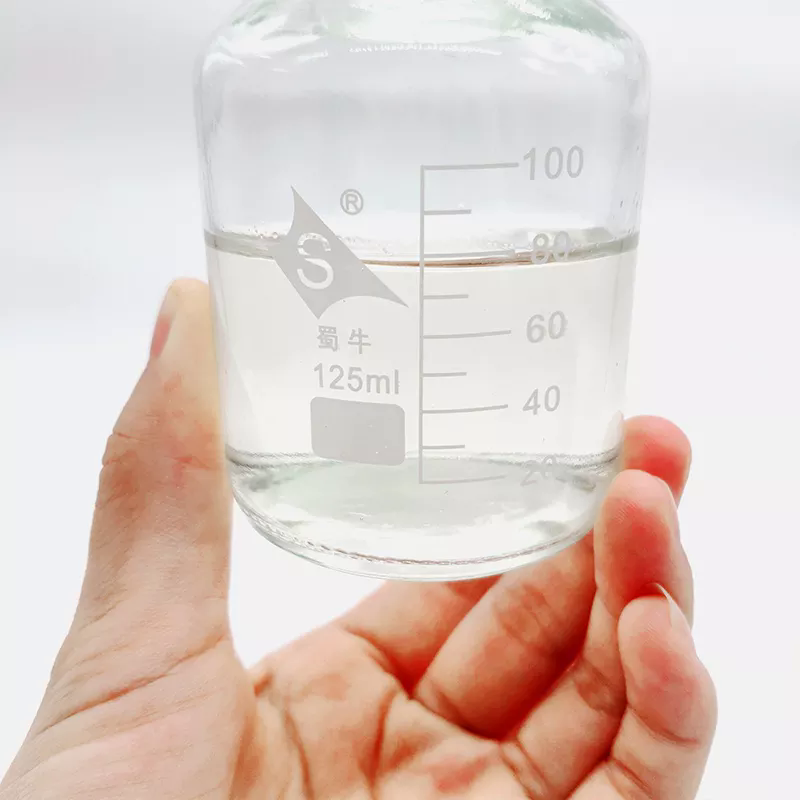Formamide
Synonym(s):Formamide;Formamide in dimethyl sulfoxide;Formamide solution;Formic acid amide, Methane amide;Formic amide
- CAS NO.:75-12-7
- Empirical Formula: CH3NO
- Molecular Weight: 45.04
- MDL number: MFCD00007941
- EINECS: 200-842-0
- SAFETY DATA SHEET (SDS)
- Update Date: 2025-02-27 17:16:38

What is Formamide?
Description
Formamide, the simplest carboxylic acid amide, is a viscous, odorless, colorless liquid with a melting point of 2 oC and a boiling point of 210 oC. When it is heated to 180 oC at atmospheric pressure, however, it begins to decompose into carbon dioxide and ammonia.
In 1920, K H. Meyer and L. Orthmer discovered that formamide can be produced by heating CO2?and NH3?under pressure—the reverse of the decomposition reaction. Today, some formamide is still made this way, but the more common process uses the reaction of methyl formate with NH3. Byproduct methanol is treated with carbon monoxide to produce additional methyl formate.
Formamide is used as a feedstock in the manufacture of formate esters, as an ionizing solvent, as an RNA stabilizer in gel electrophoresis, and in tissue preservation. More intriguingly, it may be a key compound in the origin of life on Earth.
In 2014, chemist S. Civi? and co-workers at the Central European Institute of Technology (Brno, Czech Republic) simulated asteroid and meteor collisions by bombarding formamide and clay with a powerful laser. They produced (among many other compounds) guanine, adenine, cytosine, and uracil—the four nitrogen bases that make up DNA. Formamide is found in great quantities throughout the observable universe, giving credibility to the idea that life on Earth could have originated outside the planet.
Description
Formamide is a colorless, viscous liquid with afaint ammonia odor. Molecular weight=45.05; Specificgravity (H2O:1)=1.13; Boiling point=(decomposes)210.5℃; Freezing/Melting point=2.5℃; Vapor pressure 50.1 mmHg at 30℃; Flash point=154℃. Autoignitiontemperature ≥500℃. Hazard Identification (based onNFPA-704 M Rating System): Health 2, Flammability 1,Reactivity 0. Good solubility in water.
Chemical properties
Clear, colorless liquid
Chemical properties
Formamide is a colorless, viscous liquid. Faint ammonia-like odor.
Chemical properties
Formamide is hydrolyzed very slowly at room temperature. Acids, bases and elevated temperatures accelerate the hydrolysis (Eberling 1980).
The Uses of Formamide
Formamide destabilizes nucleic acid duplexes and may be used, typically, at a concentration of 50%, in hybridization protocols requiring lower hybridization temperatures.
The Uses of Formamide
As ionizing solvent, manufacture of formic esters, hydrocyanic acid by catalytic dehydration, as softener for paper, animal glues, water-sol gums.
The Uses of Formamide
Formamide is a good solvent for proteins and salts owing to its high dielectric constant. Its main applications are as a solvent in the chemical industry, as a softener for paper, as an intermediate for the manufacturing of formic acid and esters and hydrocyanic acid, and as a reaction medium.
What are the applications of Application
Formamide is an adenine deaminase inhibitor
Definition
ChEBI: The simplest monocarboxylic acid amide, obtained by formal condensation of formic acid with ammonia. The parent of the class of formaldehydes.
Production Methods
Formamide is produced commercially by two processes (Eberling 1980). In a direct synthesis, ammonia and carbon monoxide react at 100-300 atm and 80-100°C in methanolic sodium methoxide. In the second, a two-stage synthesis, carbon monoxide and methanol form methylformate in the presence of sodium methoxide. The methylformate is treated with liquid or gaseous ammonia at 2-6 atm and 80-100°C.
General Description
A colorless liquid with a faint odor of ammonia. Denser than water. Freezing point 36°F.
Air & Water Reactions
Hygroscopic. Water soluble.
Reactivity Profile
Formamide is incompatible with strong oxidizers, acids and bases. Sensitive to light. Reacts with water very slowly at room temperature, but rate is accelerated by acids and bases at elevated temperatures. Incompatible with iodine, pyridine and sulfur trioxide. Reacts explosively with furfuryl alcohol, H2O2, Tl(NO3)3.H2O, nitromethane and P2O5. An effective solvent: dissolves casein, glucose, tannins, starch, lignin, polyvinyl alcohol, cellulose acetate, nylon, the chlorides of copper, lead, zinc, tin, cobalt, iron, aluminum and nickel, the acetates of the alkali metals, some inorganic sulfates and nitrates. Attacks copper and brass .
Hazard
Toxic material. Toxic by skin absorption.
Health Hazard
INHALATION: A moderate irritant to mucous membranes. EYES: Moderately irritating to the eyes. SKIN: A mild to moderate irritant to the skin.
Health Hazard
Formamide is moderately irritating to the skin and mucous membranes (Windholz 1983).
Agricultural Uses
Fonnamide is an organic compound containing the amide group -CONH2. It is made from formic acid or its ester with ammonia. It is also made from ammonia and carbon monoxide.
Formamide is used in making liquid fertilizers for foliar application of nitrogen. For example, a mixture of formamide, urea and ammonium nitrate is used as a solution fertilizer and has a salt-out temperature of 0°C. It contains more than 35% nitrogen, unlike the aqueous formulations of urea, and ammonium nitrate, which have 32 % nitrogen.Formamide is a good solvent for many organic compounds.
Industrial uses
Formamide is used in the large scale production of formic acid by reaction with inorganic acids, as an intermediate in the chemical industry, as a solvent in the processing of plastics, and as a solvent in felt-tip pens (Eberling 1980).
Safety Profile
Poison by skin contact and subcutaneous routes. Moderately toxic by ingestion, intraperitoneal, and intramuscular routes. An irritant to skin, eyes, and mucous membranes. Experimental teratogenic and reproductive effects. An eye irritant. Mutation data reported. Combustible when exposed to heat or flame; can react vigorously with oxidizing materials. Incompatible with 12, pyridine,SO3. When heated to decomposition it emits toxic fumes of NOx. Has exploded while in storage.
Potential Exposure
Formamide is a powerful solvent. It is also used as an intermediate in pharmaceutical manufacture.
First aid
If this chemical gets into the eyes, remove anycontact lenses at once and irrigate immediately for at least15 min, occasionally lifting upper and lower lids. Seek medical attention immediately. If this chemical contacts theskin, remove contaminated clothing and wash immediatelywith soap and water. Seek medical attention immediately. Ifthis chemical has been inhaled, remove from exposure,begin rescue breathing (using universal precautions, including resuscitation mask) if breathing has stopped and CPR ifheart action has stopped. Transfer promptly to a medicalfacility. When this chemical has been swallowed, get medical attention. Give large quantities of water and inducevomiting. Do not make an unconscious person vomit.
Environmental Fate
If released to air, formamide will exist solely as a vapor in the ambient atmosphere. Vapor-phase formamide will be degraded in the atmosphere by reaction with photochemically produced hydroxyl radicals. The half-life for this reaction in air is estimated to be 8.0 days. If released to soil, formamide is expected to have very high mobility. Volatilization from moist soil surfaces is not expected to be an important fate process. If released into water, formamide is not expected to adsorb to suspended solids and sediment. Several biodegradation screening studies have observed significant biodegradation of formamide, which suggests that biodegradation may be important. Volatilization from water surfaces is not expected to be an important fate process based upon this compound’s estimated Henry’s law constant.
Metabolism
There are only very few reports on the metabolic fate of formamide in the literature. Halsey (1898) found that formamide gave rise to as much urinary formate in the dog as did formic acid, and assumed complete hydrolysis of the amide in vivo. In a study by Bray et al (1949) the hypothesis was tested that formamide undergoes metabolic hydrolysis in rabbits. Acidic substances were titrated after extraction by ether, before and after hydrolysis of urine samples. The ether-soluble acid determined in hydrolyzed urine was assumed to reflect the amount of formamide excreted unchanged. The difference between the amount of amide administered and the total amount excreted unchanged was considered to represent amide which was metabolically hydrolyzed. After administration of 2-4 g per rabbit orally, 39% of the dose was recovered unchanged using this method. When formamide was incubated with rabbit liver extracts or liver slices, only very little hydrolysis was detected by this method.
storage
Color Code—Green: General storage may be used.Prior to working with this chemical you should be trainedon its proper handling and storage. Store in tightly closedcontainers in a cool, well-ventilated area away from moisture and other incompatible materials listed above. Wherepossible, automatically pump liquid from drums or otherstorage containers to process containers.
Shipping
UN2810 Toxic solids, organic, n.o.s., Hazard Class: 6.1; Labels: 6.1-Poisonous materials, Technical Name Required.
Purification Methods
Formamide is easily hydrolysed by acids and bases. It also reacts with peroxides, acid halides, acid anhydrides, esters and (on heating) alcohols, while strong dehydrating agents convert it to a nitrile. It is very hygroscopic. Commercial material often contains acids and ammonium formate. Vorhoek [J Am Chem Soc 58 2577 1956] added some bromothymol blue to formamide and then neutralised it with NaOH before heating to 80-90o under reduced pressure to distil off ammonia and water. The amide is again neutralised and the process is repeated until the liquid remained neutral on heating. Sodium formate is added, and the formamide is concentrated under reduced pressure at 80-90o. The distillate is again neutralised and redistilled. It is then fractionally crystallised in the absence of CO2 and water by partial freezing. Formamide (specific conductance 2 x 10-7 ohm-1 cm-1) of low water content is dried by passage through a column of 3A molecular sieves, then deionized by treatment with a mixed-bed ion-exchange resin loaded with H+ and HCONH-ions (using sodium formamide in formamide)[Notley & Spiro J Chem Soc (B) 362 1966]. [Beilstein 2 IV 45.]
Toxicity evaluation
The mechanism of toxicity of formamide is not known; the response profile is quite different from the better studied dimethyl derivative.
Incompatibilities
Forms hydrocyanic acid with water solutions. Hygroscopic (absorbs moisture from air). Incompatible with nonoxidizing mineral acids; strong acids; ammonia, cresols, iodine, isocyanates, oleum, phenols, pyr idine, sulfur trioxide; oxidizers, iodine, pyridine. Formamide decomposes on heating @ 180℃ forming ammonia, water, carbon monoxide and hydrogen cyanide. Attacks metals, such as aluminum, iron, copper, brass, lead, and natural rubber. Thermal decomposition may release deadly hydrogen cyanide. Compounds of the carboxyl group react with all bases, both inorganic and organic (i.e., amines) releasing substantial heat, water and a salt that may be harmful. Incompatible with arsenic compounds (releases hydrogen cyanide gas), diazo compounds, dithio carbamates, isocyanates, mercaptans, nitrides, and sulfides (releasing heat, toxic and possibly flammable gases), thiosulfates and dithionites (releasing hydrogen sulfate and oxides of sulfur).
Waste Disposal
Dissolve in a combustible solvent and dispose by burning in a furnace equipped with an alkali scrubber for the exit gases.
Properties of Formamide
| Melting point: | 2-3 °C(lit.) |
| Boiling point: | 210 °C(lit.) |
| Density | 1.134 g/mL at 25 °C(lit.) |
| vapor density | 1.55 (vs air) |
| vapor pressure | 0.08 mm Hg ( 20 °C) |
| refractive index | n |
| Flash point: | 310 °F |
| storage temp. | Store at +2°C to +25°C. |
| solubility | H2O: 10 M at 20 °C, clear, colorless |
| form | liquid |
| pka | 16.50±0.50(Predicted) |
| Specific Gravity | 1.138 (20/20℃) |
| color | clear, colorless |
| Odor | Odorless |
| Relative polarity | 7.3 |
| PH Range | 7.1 at 23 g/l |
| PH | 8-10 (200g/l, H2O, 20℃) |
| explosive limit | 2.7-19.0%(V) |
| Water Solubility | miscible |
| Sensitive | Hygroscopic |
| λmax | λ: 275 nm Amax: 1.00 λ: 280 nm Amax: 0.20 λ: 300 nm Amax: 0.05 λ: 360 nm Amax: 0.02 λ: 400 nm Amax: 0.01 |
| Merck | 14,4237 |
| BRN | 505995 |
| Exposure limits | ACGIH: TWA 10 ppm (Skin) NIOSH: TWA 10 ppm(15 mg/m3) |
| Dielectric constant | 84.0(20℃) |
| CAS DataBase Reference | 75-12-7(CAS DataBase Reference) |
| NIST Chemistry Reference | Formamide(75-12-7) |
| EPA Substance Registry System | Formamide (75-12-7) |
Safety information for Formamide
| Signal word | Danger |
| Pictogram(s) |
 Health Hazard GHS08 |
| GHS Hazard Statements |
H351:Carcinogenicity H373:Specific target organ toxicity, repeated exposure |
| Precautionary Statement Codes |
P202:Do not handle until all safety precautions have been read and understood. P260:Do not breathe dust/fume/gas/mist/vapours/spray. P280:Wear protective gloves/protective clothing/eye protection/face protection. P308+P313:IF exposed or concerned: Get medical advice/attention. P405:Store locked up. P501:Dispose of contents/container to..… |
Computed Descriptors for Formamide
| InChIKey | ZHNUHDYFZUAESO-UHFFFAOYSA-N |
Formamide manufacturer
ARRAKIS INDUSTRIES LLP
New Products
Methyl (R)-1-Boc-4,4-difluoropyrrolidine-2-carboxylate 2,2-Difluoropropylamine hydrochloride tert-butyl 3-bromoazetidine-1-carboxylate (R)-1-Boc-3-hydroxypyrrolidine DIFLUOROACETIC ANHYDRIDE 2,2-Difluoropropionic acid Diallylamine, 99% Calcium hydroxide, 95% Aluminum oxide, basic 2-Bromophenylacetonitrile, 97% L-tert-Leucine,97% N-Hydroxy-2-methylpropanimidamide 4-(3,4-Dichlorophenyl)-3,4-Dihydro-N-Methyl-1-(2H)-Naphthalenimine (Schiff Base) 2-AMINO-3,5-DIBROMO BENZALDEHYDE [ADBA] L-Glutamic Acid Dimethyl Ester Hcl 10-Methoxy-5H-dibenz[b,f]azepine 5-Cyanophthalide N, N-Carbonyldiimidazole (CDI) Dibenzoyl Peroxide Titanium Dioxide 2-(Methylthio) Benzonitrile Sodium Acetate Anhydrous Allopurinol 1,5-DibromopentaneRelated products of tetrahydrofuran








You may like
-
 FORMAMIDE 99%View Details
FORMAMIDE 99%View Details -
 Formamide 99%View Details
Formamide 99%View Details -
 Formamide, For ACS analysis CAS 75-12-7View Details
Formamide, For ACS analysis CAS 75-12-7View Details
75-12-7 -
 Formamide, For ACS analysis CAS 75-12-7View Details
Formamide, For ACS analysis CAS 75-12-7View Details
75-12-7 -
 27735 FORMAMIDE 99%View Details
27735 FORMAMIDE 99%View Details
27735 -
 FORMAMIDE 99%View Details
FORMAMIDE 99%View Details -
 Formamide CASView Details
Formamide CASView Details -
 Formamide CASView Details
Formamide CASView Details
